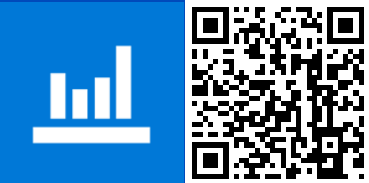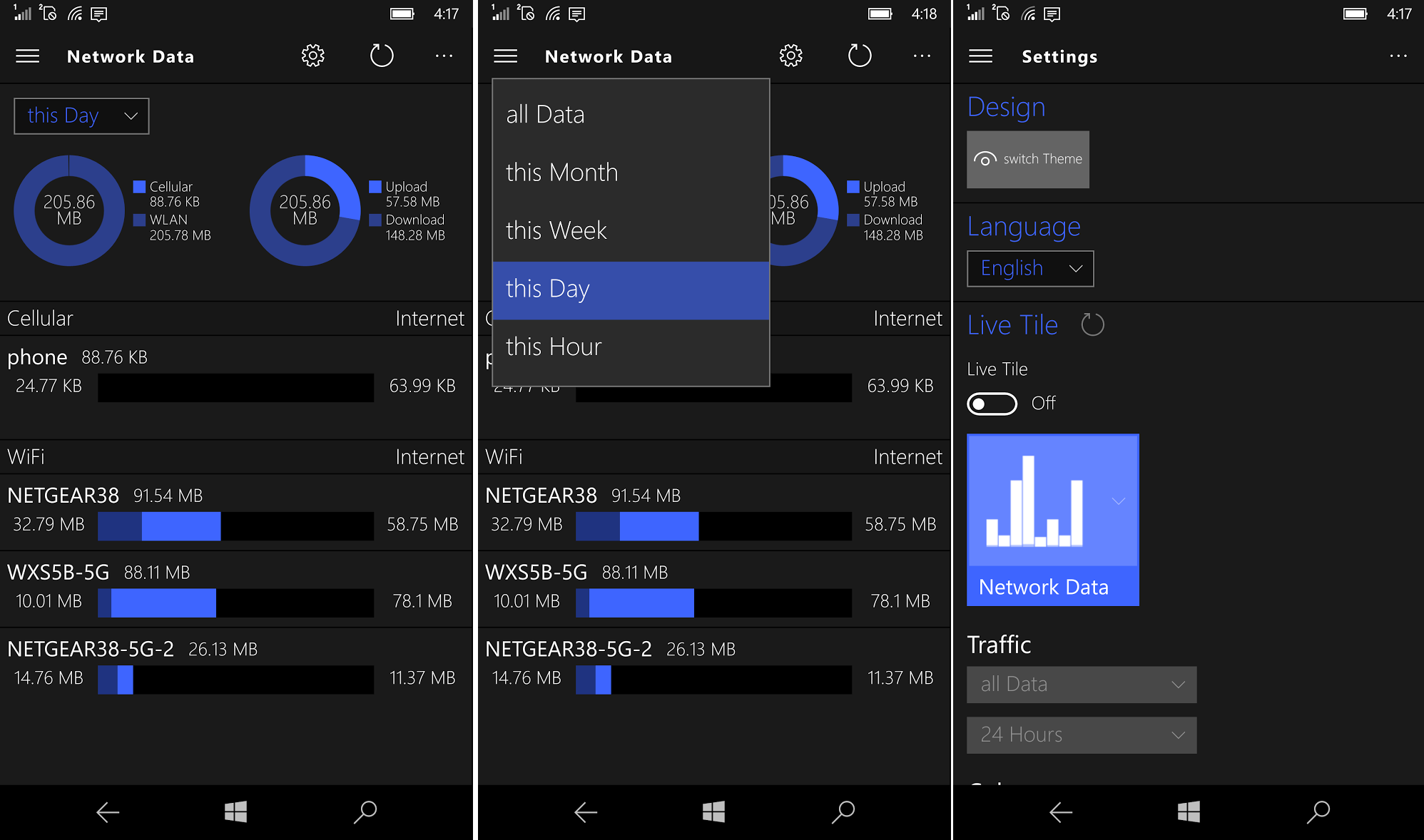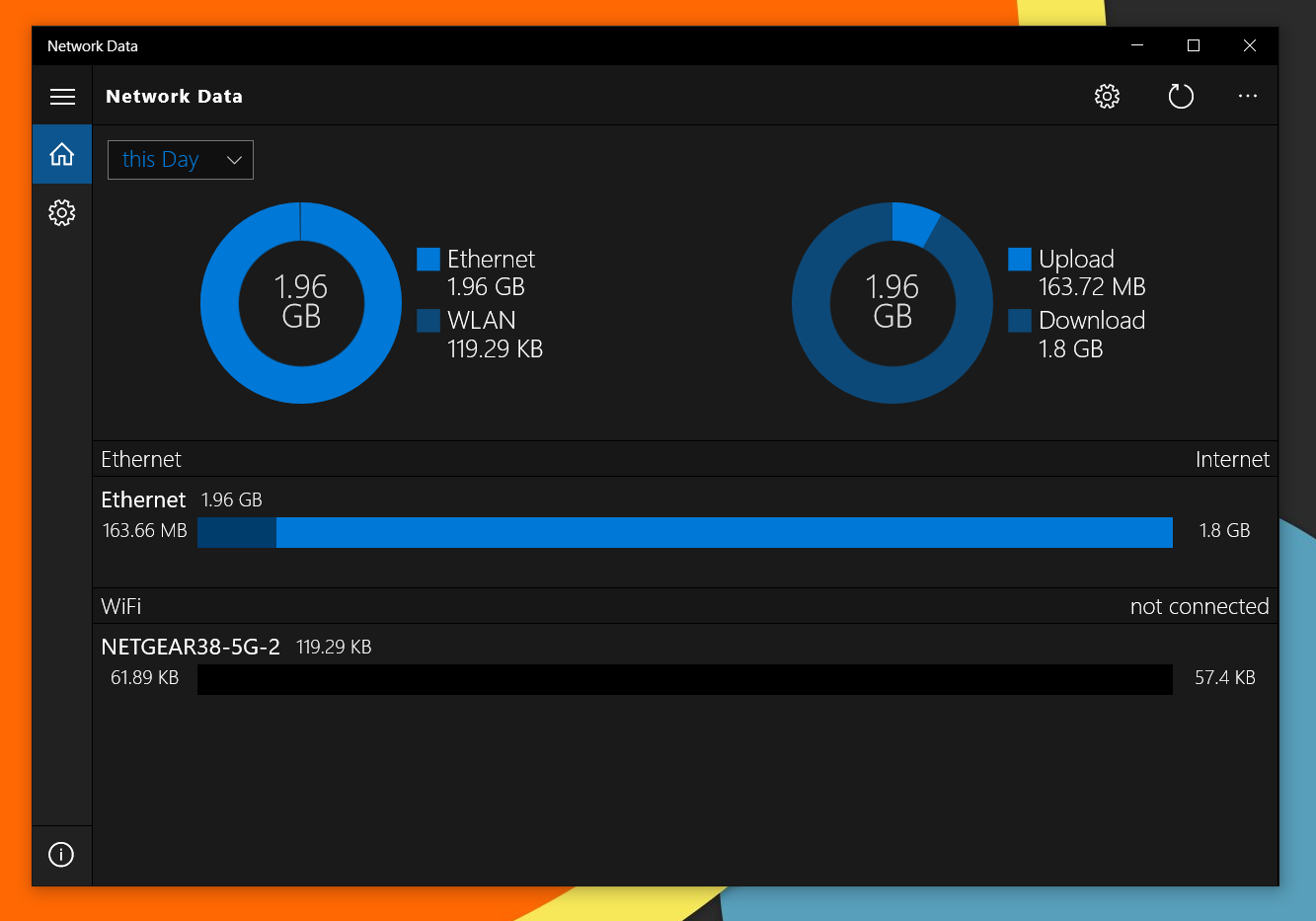Network Data is a universal Windows 10 app to track all your usage

For many people, an unlimited amount of data is not a common feature in their part of the world. Whether it is on a mobile phone, tablet or laptop keeping track of how much info your computer sends and recieves could be important for keeping in line with your data cap.
Windows 10 and Windows 10 Mobile make tracking your data usage easier, but for some it is not enough. Step in Network Data to help fill in the info gap.
Network Data
Building off of Window 10's Data Usage feature the Network Data app goes a bit further by letting you break down data usage by the network device. The app is made by the same developer behind WiFi Tool, which is also an excellent app for monitoring Wi-Fi networks on your phone or PC.
Options include letting you view data by cellular versus Wi-Fi and with the latter, analyzing by particular Wi-Fi networks. Additionally, you can view data usage over time, filtering by all time, this month, this week, day, or even the past hour. Tapping each network interface presents a nice graph with upload and download data.
Finally, under Settings, you can switch themes (light versus dark), language, Live Tile design, and Notifications (e.g. to be notified on network connection and disconnection).
Like Birthday Hub the app for Network Data runs on phone and PCs and looks fantastic. Its usage is limited to those who need such information, but for many on a restricted data plan, it is an invaluable addition to your app library. Network Data runs for $1.39 and is well worth the cost. WiFi Tool is $1.99.

All the latest news, reviews, and guides for Windows and Xbox diehards.

Daniel Rubino is the Editor-in-chief of Windows Central. He is also the head reviewer, podcast co-host, and analyst. He has been covering Microsoft since 2007 when this site was called WMExperts (and later Windows Phone Central). His interests include Windows, laptops, next-gen computing, and wearable tech. He has reviewed laptops for over 10 years and is particularly fond of 2-in-1 convertibles, Arm64 processors, new form factors, and thin-and-light PCs. Before all this tech stuff, he worked on a Ph.D. in linguistics, performed polysomnographs in NYC, and was a motion-picture operator for 17 years.


